
Butcher Shop Equipment List
When setting up a butcher shop, having the right equipment is essential for ensuring smooth operations and delivering high-quality products to your customers. From cutting and processing meat to storing and displaying products, the equipment you choose plays a crucial role in the success of your business. Whether you are starting a new butcher shop or looking to upgrade your current equipment, understanding the functions and benefits of each piece of equipment will help you make informed decisions that align with your business goals.
Shop All Butcher Shop Supplies
Use the following links to explore the equipment and supplies you'll need for your butcher shop:
Butcher shops rely on a variety of specialized equipment to efficiently process meat. When setting up a butcher shop, having the right meat processing equipment is required for efficiency, quality, and safety in handling and preparing meat products. Whether you're grinding, cutting, or tenderizing, the following equipment plays a crucial role in the meat processing operations of a butcher shop.

Meat Choppers and Meat Grinders
These machines can grind meat to different textures and are essential for making ground meats like sausage or burger patties. Meat choppers and grinders are versatile tools that can help butcher shops process large quantities of meat quickly and efficiently.
Meat Slicers
Meat slicers are used to precisely slice meat into a uniform thickness, making it easier to create deli-style cuts of meat or prepare ingredients for dishes like sandwiches or charcuterie boards. These machines are available in manual and automatic models to suit different production needs.
Meat and Bone Saws
Meat and bone saws are heavy-duty machines designed to cut through tough cuts of meat and bone. These saws are perfect for butchers who need to break down large primal cuts into smaller portions or bone-in cuts for retail sale.
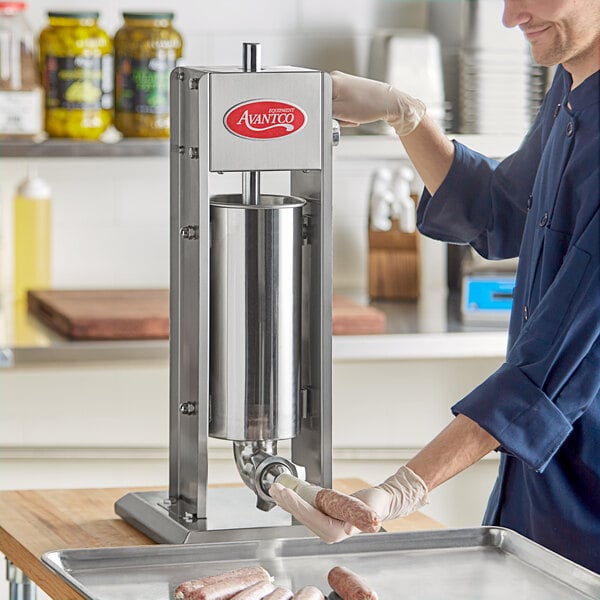
Commercial Sausage Stuffers
Commercial sausage stuffers are used to fill casings with ground meat and seasonings to create sausages. These machines come in manual and electric models, making it easy to produce a variety of sausage products in different quantities.
Commercial Meat Tenderizers and Marinators
Meat tenderizers and marinators help improve the texture and flavor of meat by breaking down tough muscle fibers and infusing them with seasonings or marinades. These machines can significantly enhance the quality of meat products and reduce cooking times.
Food Dehydrators
Food dehydrators are used to remove moisture from meat, fruits, and vegetables to create jerky, dried fruits, or other preserved products. In a butcher shop, food dehydrators can be used to extend the shelf life of certain meat products or create unique dried meat snacks for customers.
When setting up a butcher shop, you need to have a well-rounded selection of ingredients to meet the needs of your customers. Butcher shops are known for their high-quality meats and specialty products. From premium cuts of meat to seasonings and spices, a well-stocked butcher shop requires a variety of ingredients to create delicious products for its customers.

Meat and Seafood
Quality meat and seafood are the cornerstone of any butcher shop. Offer a variety of cuts, including beef, pork, lamb, and poultry, to cater to different preferences. Fresh seafood such as fish and shellfish can also be a popular choice for customers looking for a diverse selection.
Smokehouse Meat
For customers who enjoy the rich flavor of smoked meats, having a selection of smokehouse meats is a must. Consider offering smoked bacon, ham, sausages, and other cured meats to add variety to your product offerings.
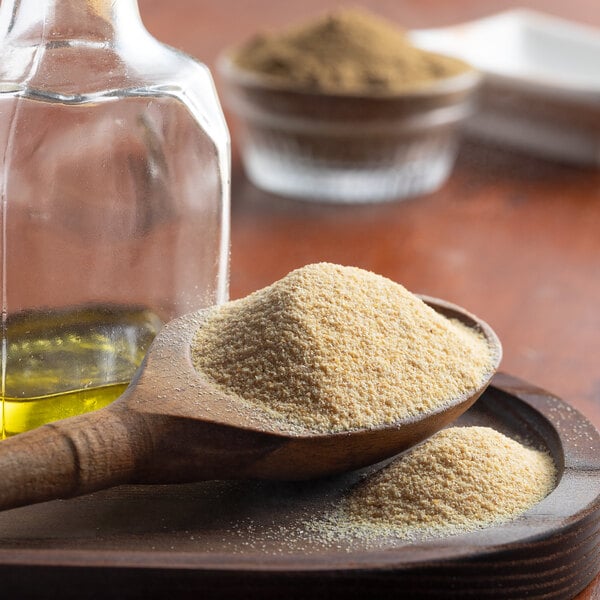
Seasonings, Rubs, and Sauces
Enhance the flavor of your meats with a selection of seasonings and sauces. From classic blends like salt and pepper to more adventurous flavors like Cajun seasoning or barbecue rubs, having a range of seasonings on hand can help you cater to a wide range of tastes.
Side Dishes
In addition to meats, offering a variety of side dishes can help customers create complete meals. Consider including items like mashed potatoes, coleslaw, macaroni and cheese, and other popular sides to complement your meat offerings.
A well-equipped butcher shop requires a variety of tools to efficiently process and prepare meat products. From precision cutting to heavy-duty chopping, the right tools are essential for maintaining a high level of quality and productivity.

Butcher Knives
Butcher knives are the workhorse of any butcher shop. These knives come in various sizes and styles, each designed for specific cutting tasks. From breaking down large cuts of meat to trimming fat and slicing steaks, a good set of butcher knives is a requirement for any butcher.
Boning and Fillet Knives
Boning and fillet knives are specialized tools used for removing bones and skin from meat and fish. These knives have thin, flexible blades that make it easy to navigate around bones and joints, ensuring that you get the most meat out of each cut.
Cleavers
Cleavers are heavy-duty knives with a thick, rectangular blade that is perfect for chopping through bones and tough cuts of meat.

Manual Meat and Bone Saws
Manual meat and bone saws are used for cutting through large bones and tough cuts of meat that are too thick for a knife to handle. These saws feature sharp, serrated blades that make quick work of even the toughest cuts, allowing you to portion meat accurately and efficiently.
Kitchen Shears
Kitchen shears are versatile tools that can be used for a variety of tasks in the butcher shop. From trimming fat and skin to cutting through joints and cartilage, kitchen shears are handy for tasks that require precision and control.
Having a well-rounded selection of barbecue supplies can elevate the quality and flavor of your products, ensuring you can meet the demands of your hungry customers.

Smokehouses
Smokehouses are essential for larger-scale smoking operations, allowing you to smoke a variety of meats simultaneously. These units are designed to maintain a consistent temperature and provide the ideal environment for slow cooking and smoking. They come in various sizes as well as both indoor and outdoor varieties to accommodate different capacities based on your needs.
Commercial Smoker Ovens
Commercial smoker ovens are another key piece of equipment for butcher shops looking to enhance their smoking capabilities. These ovens are designed for efficiency and can handle high volumes of meat while delivering consistent and flavorful results. With precise temperature controls and smoke generation systems, commercial smoker ovens offer versatility and reliability for your smoking needs.
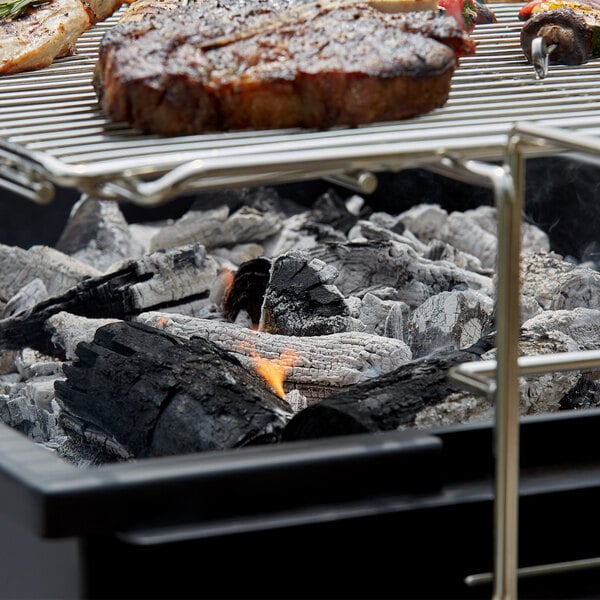
Portable Outdoor Grills
These grills come in a range of sizes and designs, from compact models for small gatherings to larger units for catering and events. Portable grills offer flexibility and convenience for your butcher shop without compromising on quality and flavor.
Wood and Charcoal
Wood and charcoal are popular choices for adding authentic smoky flavors to your products. Wood chips, chunks, and pellets are commonly used for smoking, each imparting a unique flavor profile to the meat. Charcoal provides a consistent heat source for grilling and smoking, giving meats a rich, smoky taste.
Commercial butcher shops typically require a range of refrigeration equipment to meet various storage needs. From walk-in coolers and freezers to reach-in refrigerators and display cases, each piece of equipment plays a role in maintaining the quality and safety of your meat products. Investing in high-quality refrigeration equipment will not only help you meet food safety regulations but also ensure the longevity of your products.
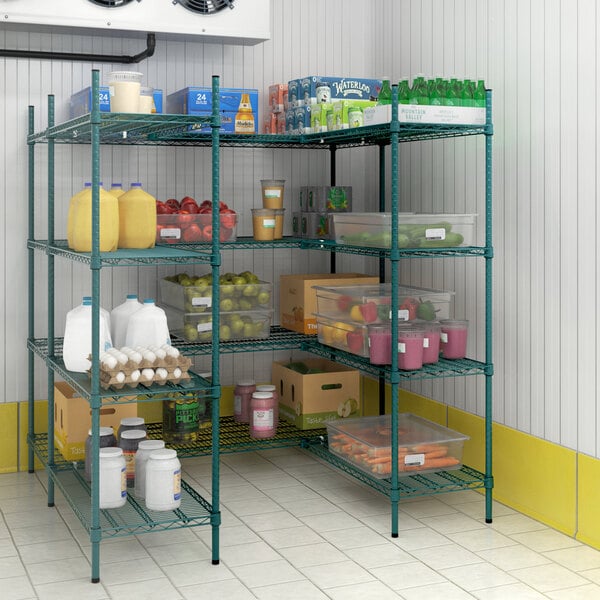
Walk-In Coolers and Refrigerators
Walk-in coolers and refrigerators are needed for storing large quantities of meat at the optimal temperature. These units provide ample space for hanging carcasses, storing cuts of meat, and keeping perishable items fresh. They are available in various sizes to accommodate the specific needs of your butcher shop.
Walk-In Freezers
Walk-in freezers store frozen meat products and extend their shelf life. These units help maintain a consistent temperature to prevent freezer burn and preserve the quality of your frozen inventory. Like walk-in coolers, walk-in freezers come in different sizes to meet the demands of your butcher shop.
Walk-In Refrigeration Shelving
Walk-in refrigeration shelving is great for adding extra space and organizing your walk-in coolers and freezers. These shelves are designed to withstand cold temperatures and heavy loads, making them ideal for storing meat cuts, packaged products, and other supplies. Choose durable and easy-to-clean shelving units to optimize storage space and ensure proper airflow to your stored meats.

Meat and Deli Cases
Meat and deli cases are essential for displaying fresh cuts of meat, sausages, and deli products to customers. These refrigerated display cases help showcase your products while keeping them at the ideal temperature to ensure food safety and quality. Choose cases with proper lighting and adjustable shelves to showcase your products effectively.
Strip Doors
Strip doors are an economical solution to maintain temperature control in your butcher shop. These clear plastic strips create a barrier between different temperature zones, preventing cold air from escaping and warm air from entering the refrigerated areas. Strip doors are ideal for walk-in coolers and freezers to improve energy efficiency and maintain product freshness.
Butcher shops rely on a range of equipment to efficiently process, store, and package meat products. In addition to essential machinery like meat slicers and meat grinders, butcher shops also benefit from a variety of accessories that help streamline operations and maintain hygiene standards.
- Butcher Paper: Butcher paper is a versatile tool used for wrapping and storing meat products. It helps protect meat from contaminants and ensures freshness during storage and transportation.
- Legal for Trade Scales: Accurate weighing is crucial in a butcher shop to comply with regulations and provide customers with precise portions. Legal for trade scales are certified for commercial use and help maintain accuracy in measuring meat products.
- Disposable Gloves: To maintain a hygienic work environment and prevent cross-contamination, disposable gloves are essential for handling raw meat. Your staff should always wear gloves when handling meat products to uphold food safety standards.
- Beef Netting and Twine: Beef netting and twine are used for trussing and tying meat cuts to maintain their shape during cooking or smoking. These accessories help improve the presentation of meat products and ensure even cooking.
- Basters and Injectors: Basters and injectors are tools used for marinating and adding flavor to meat products. These accessories help enhance the taste and juiciness of meat cuts, making them more appealing to customers.
- Meat Lugs: Meat lugs are durable containers used for transporting, storing, and marinating meat products. These stackable containers are easy to clean and help streamline the handling of meat in a busy butcher shop.
- Meat Packaging Trays: Meat packaging trays are designed to display and package meat products for retail sale. These trays come in various sizes and materials to suit different types of meat cuts and help enhance the presentation of your products.
Related Resources
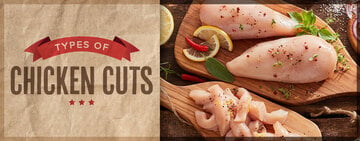
Types of Chicken Cuts
Chicken is one of the most popular meats in the world and, thanks to its versatility, is a staple part of cuisines in many cultures. It's easy to use every part of the bird to create fantastic dishes, reducing food waste while serving customers their favorite food. From tenderloins to drumsticks, there are multiple types of chicken cuts available with unique textures, flavors, and cooking methods. Use this guide to explore the most popular types of chicken cuts and their characteristics to make informed decisions when selecting poultry for your butcher shop , restaurant, or catered event. Shop All Bulk Chicken Use the following links to learn more about types of chicken cuts: Parts of a Chicken Whole Chicken Breast Tenderloin Back Wing Leg
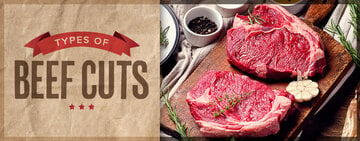
Types of Beef Cuts
Beef is a popular ingredient in nearly every world cuisine, and it's easy to see why. From premium Argentinian asado to convenient fast food burgers, there is an endless number of uses for beef to suit any occasion. Learn how to differentiate between the different cuts and varieties so you can offer guests the perfect piece of beef at your butcher shop or your next event. Shop All Wholesale Beef Use the following links to explore the types of beef cuts out there, so you can make more informed purchases for your menu! Primal Cuts of Beef Chuck Rib Loin Round Flank Plate Brisket Shank Beef Cuts FAQs Beef Cuts Diagram

Beef Grades Explained
Why are some pieces of steak more expensive than others even though they are of the same cut? The answer will most likely come down to the quality grading it received from the United States Department of Agriculture (USDA). If you're opening a butcher shop or operating a steakhouse, it's important to understand beef grades and be able to communicate what they mean to your customers. We'll explain the difference between the quality grades of beef so you get the most for your money the next time you see a USDA shield. Shop All Beef How Is Beef Graded? Beef quality grades are assigned based on the meat's intramuscular fat marbling and the maturity of the cattle at the time of slaughter. These USDA meat grades help identify the juiciness and te
- Topics 1356
- Industrial 55
- Troubleshooting Guides 21
- Restaurant Management 128
- Bar Management 56
- Catering Tips 36
- Bakery Management 42
- Food Trucks & Concessions 49
- Advertising & Marketing 37
- Eco-Friendly Tips 11
- Facility Layout & Design 42
- Coffee Shop Tips 28
- Installation & Maintenance 51
- Janitorial & Pest Control 30
- Safety & Sanitation 88
- Startup Tips 104
- Menu Design 10
- Kitchen & Cooking Tips 83
- Hospitality Management 24
- Pizza & Sandwich Shop Tips 36
- Smallwares 37
- Food Prep 89
- Tabletop Items 17
- Disposables 22
- Calculators & Tools 6
- Consumables 52
- Warewashing & Laundry 19
- Cooking Equipment 91
- Food Storage & Refrigeration 51
- Beverage Equipment 35
- Office Supplies 6
- Resource Type
- In-Depth Articles272
- Buying Guides298
- How-Tos95
- Product Reviews78


